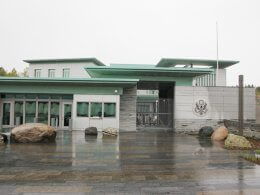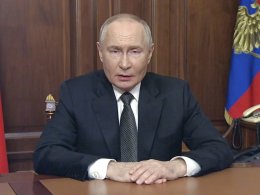The Biden Administration is deepening its involvement in the Ukraine conflict by inviting up to 100 Ukrainian troops to the United States for weapons training on the Patriot missile defense system, according to a recent government report.
Officials from the U.S. Defense Department said that the Ukrainian troops are heading to Fort Sill in Oklahoma next week to learn how to run a Patriot battery, which can shoot down attack planes, cruise missiles, and ballistic missiles before they hit their targets.
Before this decision, the Ukrainian government only allowed its forces to leave the battlefield for short-term training on complex weapon systems at European bases under the instruction of American and North Atlantic Treaty Organization (NATO) troops.
“It is a positive development, but a first step rather than the final one. Ukraine needs much more. It is unfair the U..S has sought to constrain Ukraine’s fight to its own territory and given Russia a free pass to lob rockets and missiles in from afar,” Michael Rubin, a former Pentagon Official and Senior Fellow at the American Enterprise Institute (AEI) said to The Foreign Desk.
However, unlike other complex systems sent to Kyiv, like the High Mobility Artillery Rocket System (HIMARS), Patriots require intensive, firsthand training outside Europe.
The decision to send troops to the U.S. for training underscores the military's need for the Patriots in its fight against Moscow and the Pentagon's long-term commitment to the war effort.
According to Defense Department spokesman Brigadier General Pat Ryder, the training will "prepare approximately 90 to 100 Ukrainian soldiers to operate, maintain, and sustain the defensive system over a training course expected to last several months."
"Once fielded, the Patriot will contribute to Ukraine’s air defense capabilities and provide another capability to Ukrainian people to defend themselves against Russia’s ongoing aerial assaults,” Ryder said.
“It helps address a problem: Iranian drones and Russian rockets. But the question will quickly become supply.
The White House decision to limit the range of HIMARS provided to Ukraine mean that Russian missile and rocket factories remain far outside Ukraine’s range.
While Russia has depleted its stockpiles, it is quickly manufacturing more. The question then is whether the U.S. will continue to provide the Patriots to keep up with Russian manufacturing or if this is a flash in the pan that will not help Ukraine win in the long run,” explained Rubin.
Patriot missiles are surface-to-air guided missile defense systems that consist of eight launchers loaded with up to four interceptors and mounted atop a truck along with ground radar, a control station, and a generator. Military experts say it takes about 100 troops to operate one battery.
In December last year, the U.S. committed to sending a Patriot battery to Ukraine as part of a $1.85 billion military assistance package.
Once the first Patriot system is operational, "We will send another signal to President Biden that we would like to get more Patriots," Zelensky said during his visit.
Currently, the U.S. Army has 16 Patriot battalions, and the training schools are located at Fort Sill. Ryder noted that there is no plan to train additional forces beyond the initial 100, but that "will be a part of an ongoing discussion with Ukraine."
Training for such a system will take several months, but the U.S. plans to expedite the training course so the system can be activated in Ukraine.
According to Rubin, the Pentagon should provide the Ukrainian army with “Abrams tanks and F-16s.”
“It is time Jake Sullivan and Jon Finer, neither of whom served in the military, stop trying to micromanage Ukraine’s war with a 5,000-mile screwdriver. The Biden team must stop conflating the question whether to train with whether to provide. Train now and preserve the option to deploy. But, if we do not begin training, we will not have the ability to get the platforms in a meaningful way to the Ukrainians without a two-year delay,” said Rubin.
In response to this plan, officials at the Kremlin have accused the U.S. of dangerously escalating the war by providing the Patriot Battery.
"Such a step would lead to an escalation of the conflict and increase the risk of direct involvement of the American army in hostilities," said Russian Foreign Ministry spokeswoman Maria Zakharova.
“I would say the ability to strike deep into Russia. We have to stop self-deterring, as this only empowers Putin. We can still come to an agreement on rules-of-engagement, such as only targeting defense factories in Russia. If Russian workers in the environs of Moscow or Omsk realized they were legitimate targets, they might think twice about the value of the paycheck they receive for contributing to the war effort,” said Rubin.
With the invasion of Ukraine reaching almost one year, the Russian army has also relied on foreign forces to mitigate its losses against Ukraine, relying on military-grade drones from the Islamic Republic of Iran to attack Ukrainian forces. Along with the U.S., Germany pledged a Patriot battery last week, which will complement several air defense systems committed to Ukraine by foreign partners.
According to Rubin, Putin will “sputter and bluster and may even pee his pants, though the latter would be the result of his cancer anyway. The point is that we have to look at this through the lens of what will enable Ukraine to drive Russia out of every inch of Ukrainian territory rather than always game Putin. Leave that to the Ukrainians who know him better than many America policymakers do anyway.”
Related Story: U.S. Sending Patriots to Ukraine Under $1.85B Aid Package










